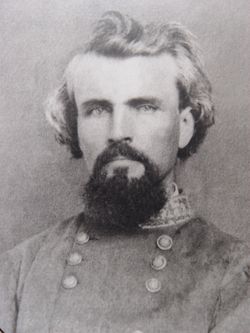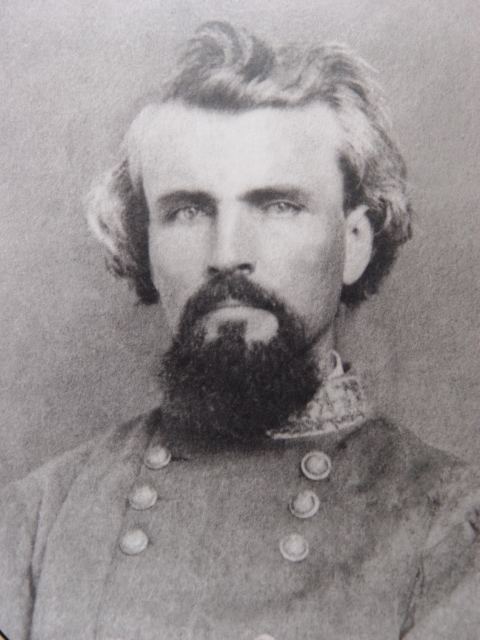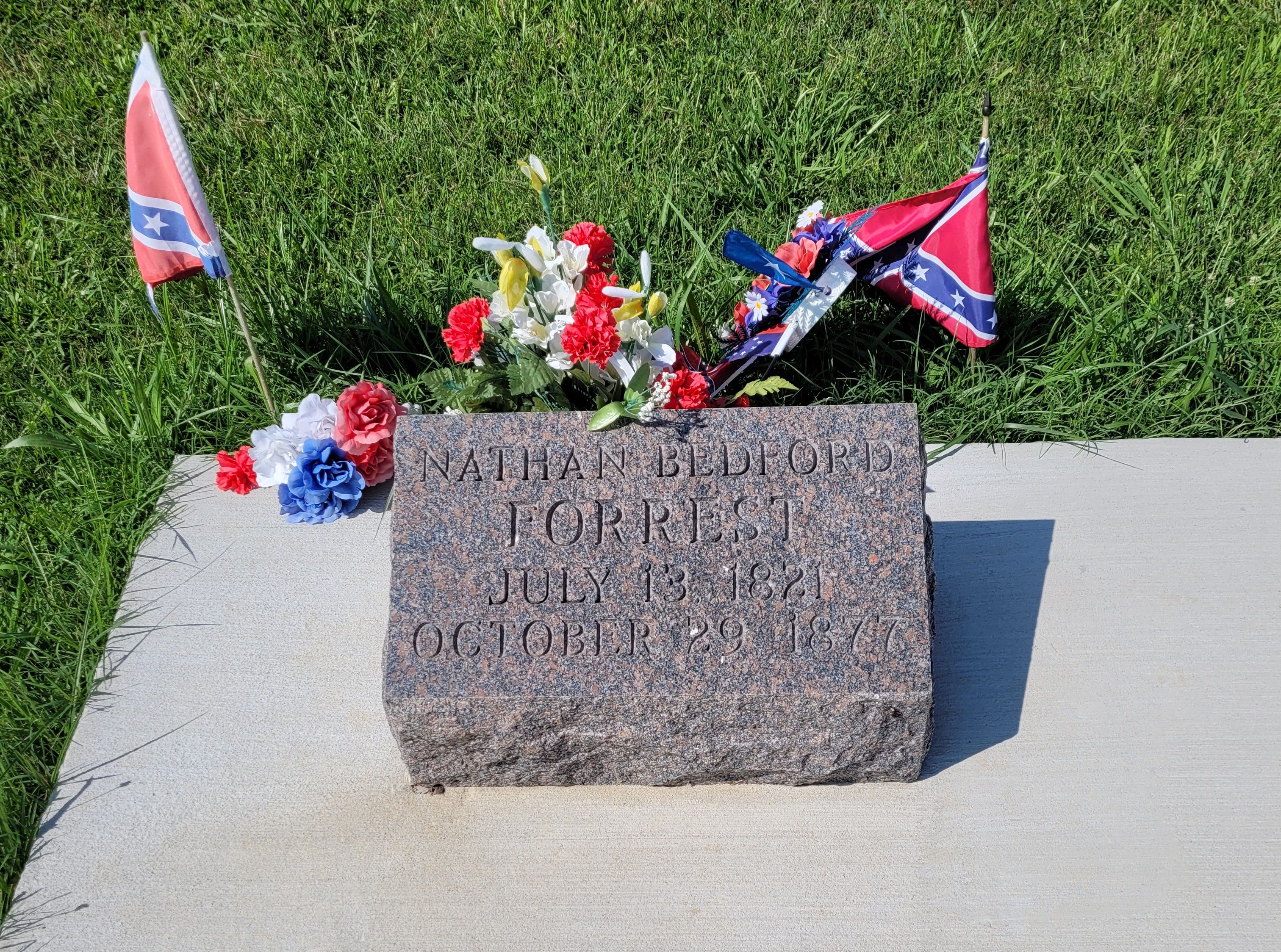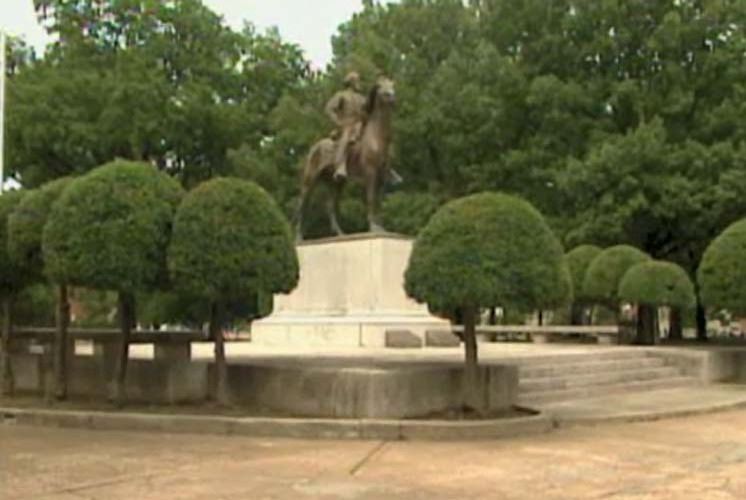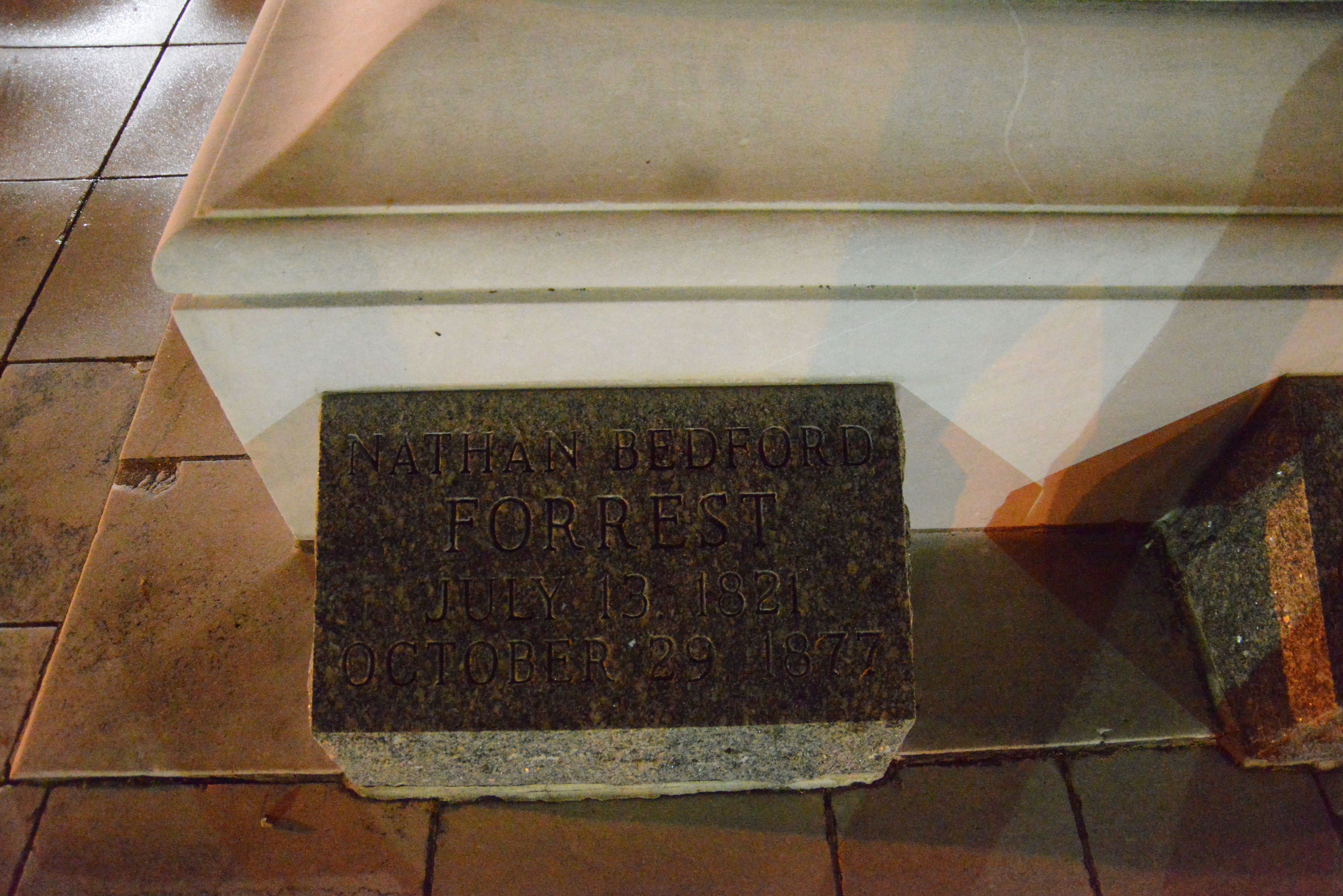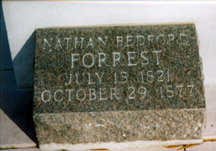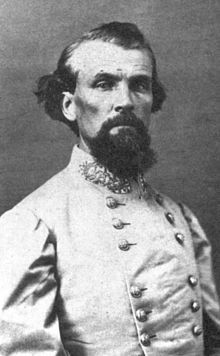Civil War Confederate Lieutenant General
He was born in Marshal County, Tennessee, the son of a poverty-stricken backwoods blacksmith. At age 16 and with no formal education, the death of his father left him with the responsibility of providing for himself and a large family. He became a multimillionaire by being a slave trader, as well owning a cotton plantation, trading horses and cattle, and acting as a real-estate broker.
At the onset of the Civil War, he enlisted as a private in a Tennessee regiment before quickly rising through the ranks, even without having received any formal military training. He was noted for supporting the Confederacy monetarily, helping provide men under his command with horses and equipment at his own expense. He is noted as a highly successful raider behind Union lines, but also faced off in more traditional battles. In April 1864, Forrest received word that citizens near Fort Pillow were being victimized by U.S. troops and Union loyalists sent to the abandoned fort. The clash that ensued became known as the Battle of Fort Pillow. Attempts to negotiate a surrender failed, and Forrest's forces charged. There were many reports of individual Union soldiers discarding their arms in surrender, only to be shot dead. Forrest, who was a Freemason, joined the Ku Klux Klan in 1867 (two years after its founding) and was elected its first Grand Wizard.
Forrest died of acute complications from diabetes at the Memphis home of his brother, Jesse. Services were held at Court Avenue Presbyterian Church in Memphis before he was buried at Elmwood Cemetery. In 1904, he and his wife were reinterred at Forrest Park where a bronze equestrian monument by sculptor Charles H. Niehaus was erected as the headstone in 1905.
This park was renamed Health Sciences Park in 2013 by the city council. In June 2021, the couple's remains were disinterred for reburial at the National Confederate Museum in Columbia. This reinterment followed years of grave desecration, vandalism, protests and lawsuits that resulted in the removal of his headstone monument one night in December 2017 by a tree-removal company.
Civil War Confederate Lieutenant General
He was born in Marshal County, Tennessee, the son of a poverty-stricken backwoods blacksmith. At age 16 and with no formal education, the death of his father left him with the responsibility of providing for himself and a large family. He became a multimillionaire by being a slave trader, as well owning a cotton plantation, trading horses and cattle, and acting as a real-estate broker.
At the onset of the Civil War, he enlisted as a private in a Tennessee regiment before quickly rising through the ranks, even without having received any formal military training. He was noted for supporting the Confederacy monetarily, helping provide men under his command with horses and equipment at his own expense. He is noted as a highly successful raider behind Union lines, but also faced off in more traditional battles. In April 1864, Forrest received word that citizens near Fort Pillow were being victimized by U.S. troops and Union loyalists sent to the abandoned fort. The clash that ensued became known as the Battle of Fort Pillow. Attempts to negotiate a surrender failed, and Forrest's forces charged. There were many reports of individual Union soldiers discarding their arms in surrender, only to be shot dead. Forrest, who was a Freemason, joined the Ku Klux Klan in 1867 (two years after its founding) and was elected its first Grand Wizard.
Forrest died of acute complications from diabetes at the Memphis home of his brother, Jesse. Services were held at Court Avenue Presbyterian Church in Memphis before he was buried at Elmwood Cemetery. In 1904, he and his wife were reinterred at Forrest Park where a bronze equestrian monument by sculptor Charles H. Niehaus was erected as the headstone in 1905.
This park was renamed Health Sciences Park in 2013 by the city council. In June 2021, the couple's remains were disinterred for reburial at the National Confederate Museum in Columbia. This reinterment followed years of grave desecration, vandalism, protests and lawsuits that resulted in the removal of his headstone monument one night in December 2017 by a tree-removal company.
Bio by: mahina
Inscription
NATHAN BEDFORD
FORREST
JULY 13, 1821
OCTOBER 29, 1877
Gravesite Details
Remains reburied at the National Confederate Museum in June 2021.
Family Members
-
![]()
Frances "Fanny" Forrest
1821–1841
-
Mary Forrest
1826–1841
-
![]()
LTC Aaron H. Forrest
1828–1864
-
![]()
Pvt John Nathaniel Forrest
1829–1867
-
![]()
Maj William Hezekiah Forrest
1831–1875
-
![]()
Mildred "Milly" Forrest
1831–1841
-
![]()
LTC Aaron H. Forrest
1833–1864
-
![]()
COL Jesse Anderson Forrest
1833–1889
-
Isaac Forrest
1835–1841
-
![]()
Col Jeffrey Edward Forrest
1837–1863
Advertisement
See more Forrest memorials in:
Records on Ancestry
Advertisement
